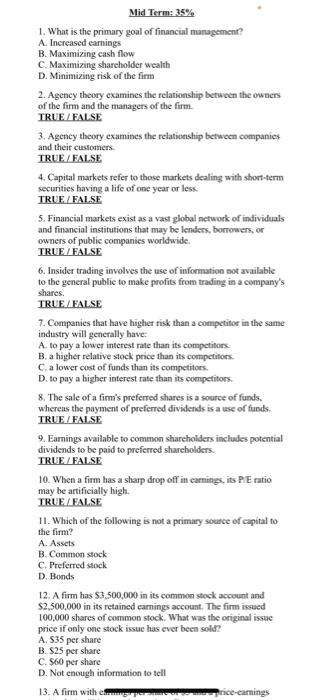Answered step by step
Verified Expert Solution
Question
1 Approved Answer
foundation of fundamental management 1. What is the primary goal of financial management? A. Increased carnings B. Maximizing cash flow C. Maximizing sharcholder wealth D.
foundation of fundamental management 

Step by Step Solution
There are 3 Steps involved in it
Step: 1

Get Instant Access to Expert-Tailored Solutions
See step-by-step solutions with expert insights and AI powered tools for academic success
Step: 2

Step: 3

Ace Your Homework with AI
Get the answers you need in no time with our AI-driven, step-by-step assistance
Get Started


